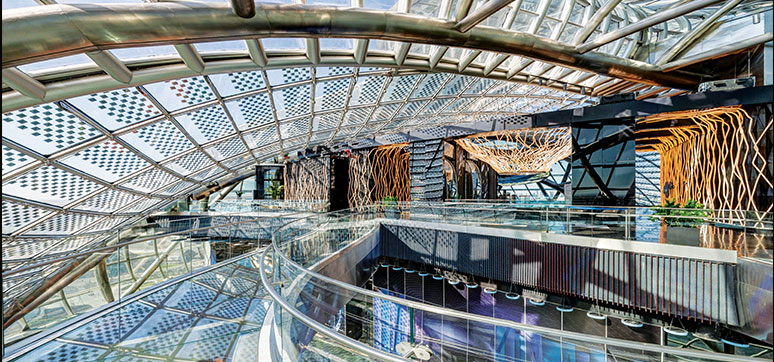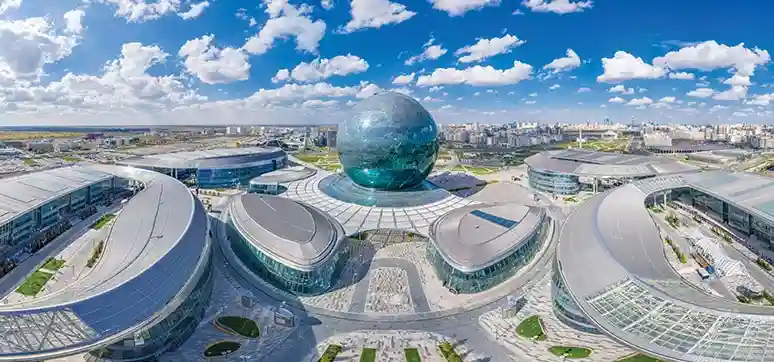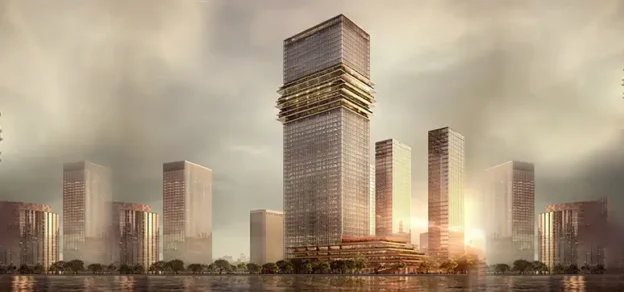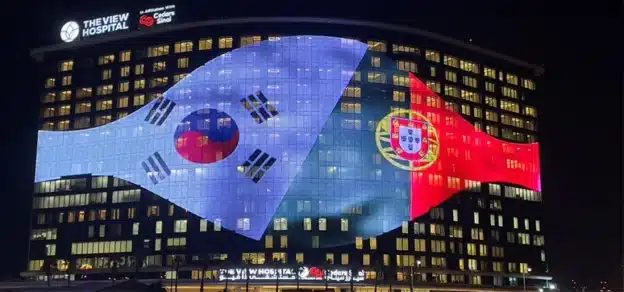The defining symbol of the Expo -2017 site is the 24,000 sm Kazakhstan Pavilion Sphere, located at the center of the exposition. In order to maintain a true spherical character, the exterior envelope is a double-curved-glass façade.
The Kazakhstan Pavilion Sphere is structurally supported by a central double core that is used to organise stairways and support functions such as service elevators and restrooms. A central atrium is surrounded by eight passenger elevators where visitors can experience the building and exhibitions as they travel on glass elevators from the ground level plaza to the top observation and event space. There are two opposing atria that are designed for absorption and convection in order to circulate air from the warm side of the Sphere to the cool side throughout the year.
At the base, a covered access plaza organises the entry sequence to the museum floors and also acts as additional exhibition space. Visitors can walk under the sphere and see into the interior spaces for alternative vantage points. Levels 2-7 are designated exhibition floors and Level 8, the highest floor, is an event space with a viewing platform to observe views of Astana.
The 80 meter diameter structure features an exterior wall system that reduces thermal loss and interior solar glare. A host of integrated systems, including photovoltaics, save energy use and increase energy output of the building simultaneously. The structure was slightly modified from a perfect complete sphere shape with the goal to achieve the desired renewable-energy goals. The building’s form, with its potential geometry adjustments, was extensively tested and modeled to determine how to minimise energy use, maximise day-lighting, control glare, and take advantage of renewable sources with integrated photovoltaics and wind turbines that create energy for the building.

Many concepts were completed and tested to integrate the BIPV panels while balancing the requirements of other significant building components such as MEP, surface area requirements, collision with other architectural elements, maximizing wind swept area for the turbines, and the rationalization the double-curved minimal surface geometry.
Ultimately Building Integrated Photo Voltaic cells (BIPV) were installed at the top of the sphere to generate renewable energy for the building. During the testing phase, the energy model predicted 81,056 kWh/yr of electricity or 2.21% of total energy demand. This generation of renewable energy serves not only as a pragmatic need but also as a symbolic function of the entire exposition. Visitors experienced firsthand renewable energy generation in progress through the exposed BIPV and wind turbines located at the top floor of the sphere.
A concave area was carved out of the building’s top for wind turbines to take advantage of potential wind energy generation. Countless geometries were modeled and tested to find an appropriate form that responded to both the programmatic requirements and optimized the amount of energy generation. These iterations focused on the wind energy that could be harvested from the surface of the sphere.
The design team worked closely with wind engineers to design and test multiple overall building forms and eventually the various shapes of an inlet on the surface of the building. Predominant southwest winds activate the turbines that were designed specifically for the harsh winter conditions of Astana.
Other sustainable strategies that reduce energy costs of the Kazakhstan Pavilion include: high performance glazing with an ultra-clear low-iron glass with low-E coating and ceramic frit in a varied pattern to reduce glare and heat gain on areas of maximum radiation, horizontal mullions that support a perforated enclosure with a radiant heating tube system, and efficient LED lighting is integrated into the exterior curtain wall mullion system.
Exterior Wall
Glazed unitized curtain wall consists of thermally broken double-curved insulated glass units (IGU) with aluminum mullions supported by the building’s primary structural tube system and secondary members. The horizontal mullions support a perforated enclosure with a radiant heating tube system. The steel tube structural system is thermally isolated from the unitised glass wall. The inboard and outboard lite of the double glazed insulated glass unit are laminated glass units. The outboard laminated lite includes a pattern of ceramic frit.
Fact File :
Client: It Engeneering
Architect: AS+GG
Structural: Werner Sobek
Façade: AS+GG
Materials used for Façade & Fenestration: Curved glass (Sunglass from Italy)
Commencement Date: December 2013 (design process)
Completion Date: April 2015 (Design process)














